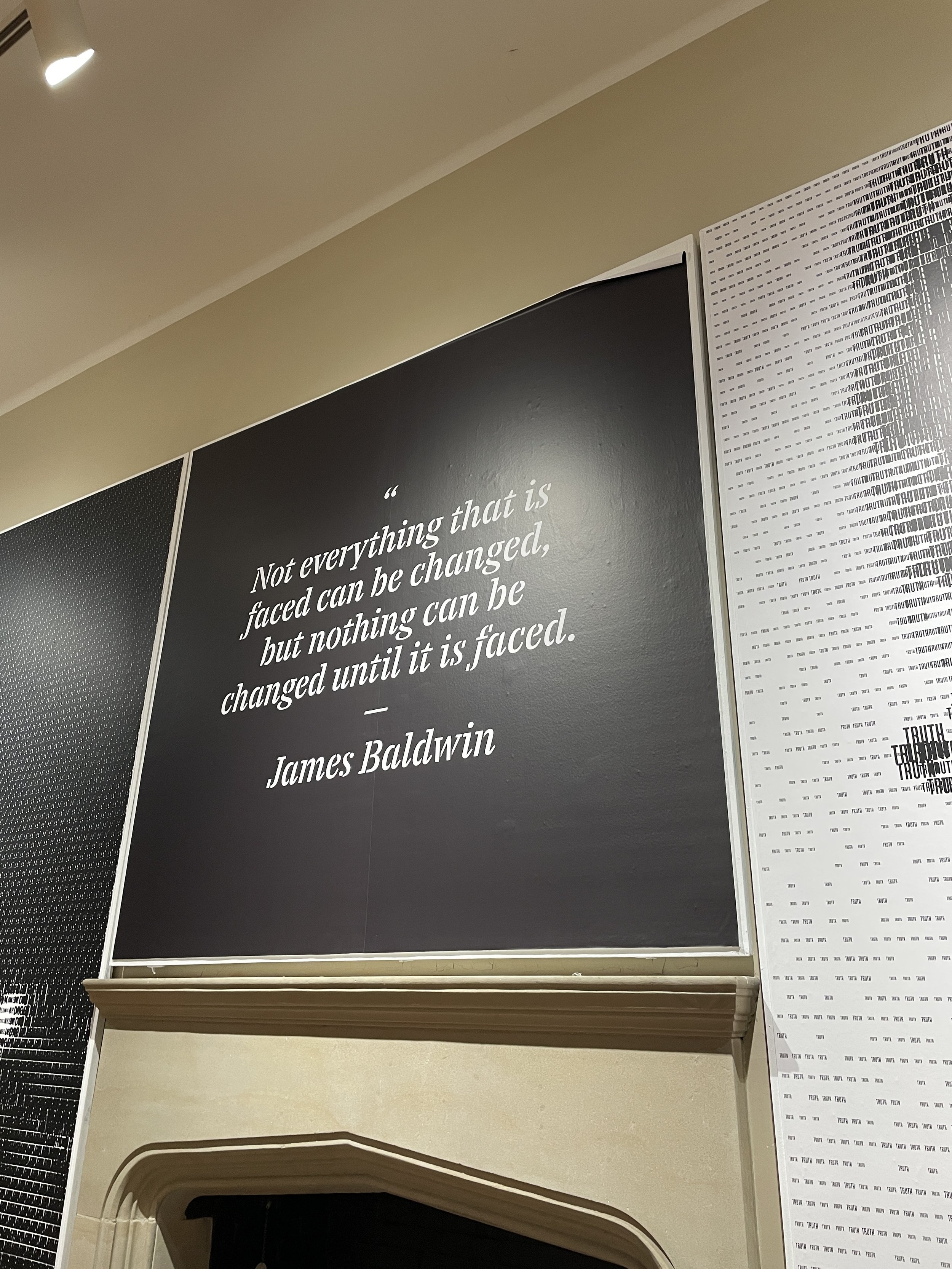Spotlight: Tré Seals Brings Vocal Type to Richmond
Characters exhibit at The Branch Museum of Architecture & Design
Arts & culture in many forms are archival of black history, and through the eyes of Maryland designer, Tré Seals, creator of the ‘Characters’ exhibit at The Branch Museum of Architecture & Design, typefaces through time have a story to tell. Tré is the founder of the diversity-driven foundry, Vocal Type, and will be sharing the foundry’s fonts, inspired by Civil Rights and BLM Movements, with the Richmond community through March 12th, 2023.
Who are you?
My name is Tré Seals, he/him, and I am the founder of the diversity-driven type foundry known as Vocal Type. Now 29, I’ve been named a Young Gun by the One Club for Creativity, a Black Design Visionary by Instagram and the Brooklyn Museum, and a Forbes 30 Under 30 Lister.
Tell me a bit about your relationship to your creative work as a designer. How would you describe your style? What led you to this medium of art?
I’ve been on a lifelong path when it comes to design: I’ve been practicing writing in cursive since I was in kindergarten; I sold $3 graffiti-inspired name cards to my classmates between the ages of ten and eleven. I was designing tattoos, bead jewelry, comic strips for the school paper, yearbooks, my first font, and more by high school. After graduating in 2015 with a degree in Visual Communication Design, I went on to open my own brand consultancy (2015-2020) known as Studio Seals. Through Studio Seals, I worked with over 250 partners, ranging from small startups to national and global brands. In 2016, I founded a diversity-driven type foundry known as Vocal Type.
What inspiration began your process of creating the Characters exhibit?
What is the story we want to tell? That was the question that guided the Civilization team and I as we began to build out the Characters exhibition. After deciding that this should be a Vocal Type exhibition, we began looking through my catalog of typefaces. While I have released typefaces inspired by various cultures, we began to see this story come together around typography and Black history. So by focusing on the characters my typefaces are named after, and the histories within each typeface, we began to see these overlapping timelines that connect each character within the exhibition. That's what brought it all together.
How have you felt your work connect to the community around you? While showing in Richmond/at The Branch Museum? Have you discovered anything new through these connections?
As someone who believes that everything happens for a reason, I’m still amazed at how things come together. While I started Vocal Type in 2016, it took quarantine in a pandemic and the murder of George Floyd for Vocal’s work and value to be seen and recognized. With this in mind, everything I create is in memory of George. So, when I found out that the museum faced the iconic Robert E. Lee statue that was so pivotal, not only within the community but within the grand scheme of the BLM movement, I knew this was the perfect place for my first exhibition.
Describe your type foundry, Vocal Type. When did it come to fruition, and what has been a special moment to come out of the project?
Inspired by the lack of diversity in the graphic design industry, each typeface highlights a piece of history from a different underrepresented race, ethnicity, or gender—from the Women's Suffrage Movement in Argentina to the Civil Rights Movement in America and beyond. However, since the murder of George Floyd, these typefaces have gone from being inspired by movements to becoming a part of them. VTC Martin, for example, a font inspired by protest signs from the Memphis Sanitation Strike of 1968 is now being used for BLM street murals, the logo of the Amazon Labor Union, and more. Or VTC Bayard, a typeface inspired by a sign from the 1963 March On Washington for Jobs & Freedom, was used in the 2020 Virtual March On Washington campaign, bringing a part of history full circle. Moments like these let me know that this is what I'm meant to do.
Sign which inspired Vocal Type’s “Bayard” font.
What advice do you have for young artists interested in exploring type design?
Fail as much as possible. The more you fail, the better you get, and the more you trust your instincts.
What feeds your creativity when you are not actively creating work/how do you overcome artistic blocks?
As for overcoming creative blocks, cloud-watching does it for me. Returning to those childhood moments, I'd search for shapes, letters, animals, and people in the clouds. Getting back to that basic level of creativity, of imagining a different world, that's what does it for me.
Photo by Jared Soares
What do arts and culture mean to you? Why does it matter? Feel free to add anything additional that was not asked!
In short, I firmly believe that those who fail to learn from history are doomed to repeat it. Arts and culture serve as reminders of how far we've come.
To learn more about Tré: https://www.itsnicethat.com/features/tre-seals-vocal-type-conscious-creativity-graphic-design-021220
To explore Vocal Type: https://www.vocaltype.co/
To learn more about ‘Characters’ at the Branch Museum: https://characters.vocaltype.co/







